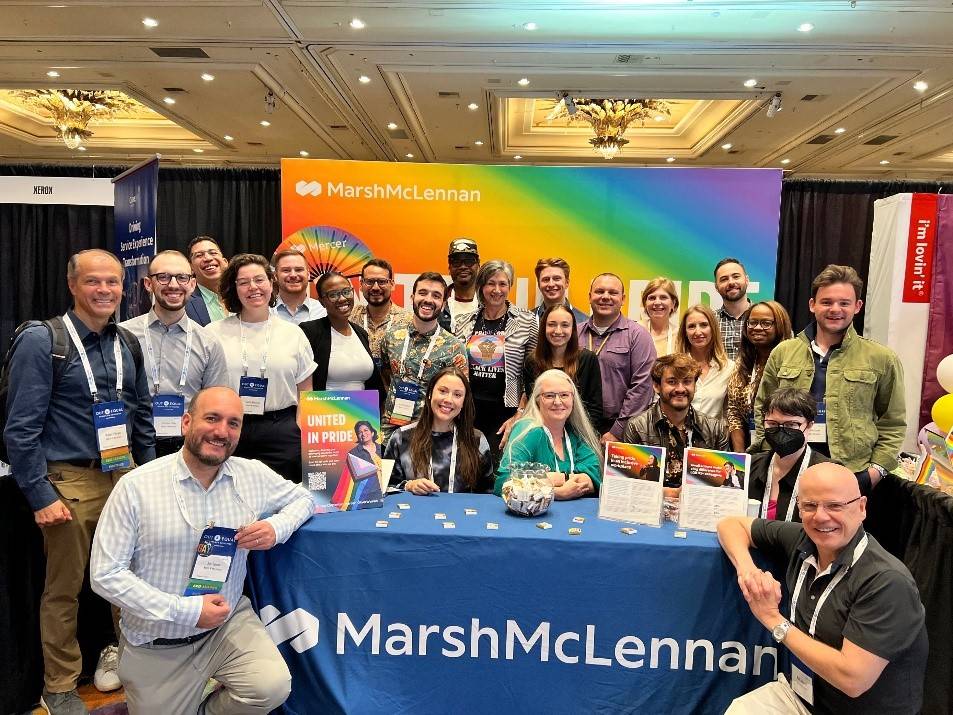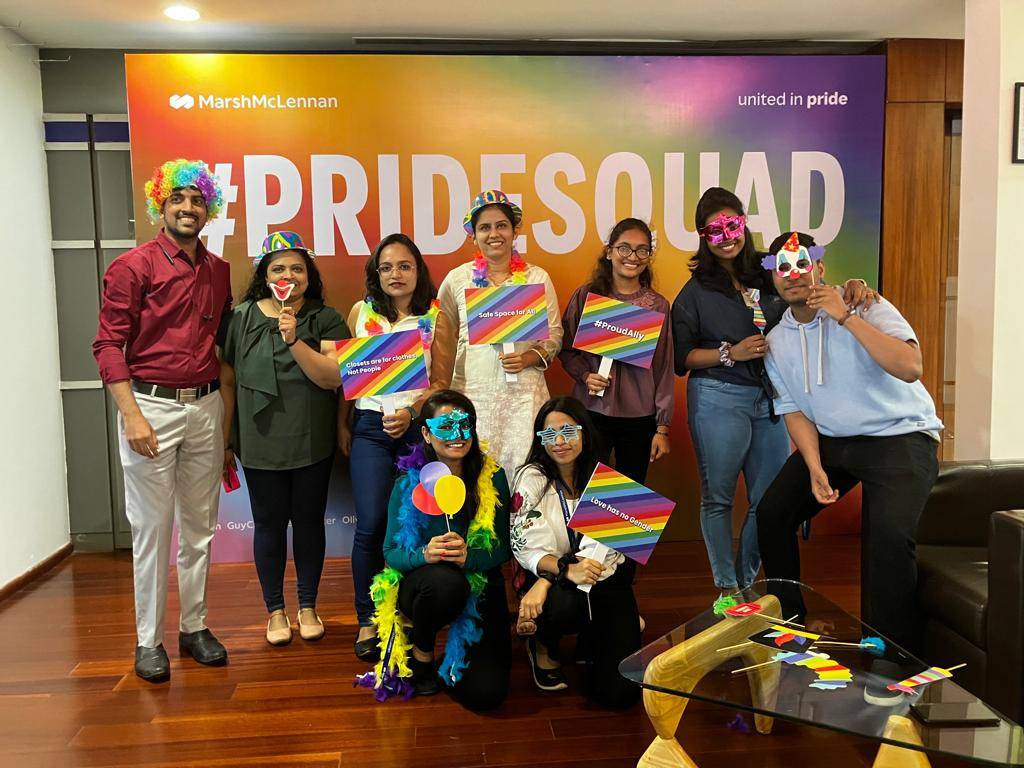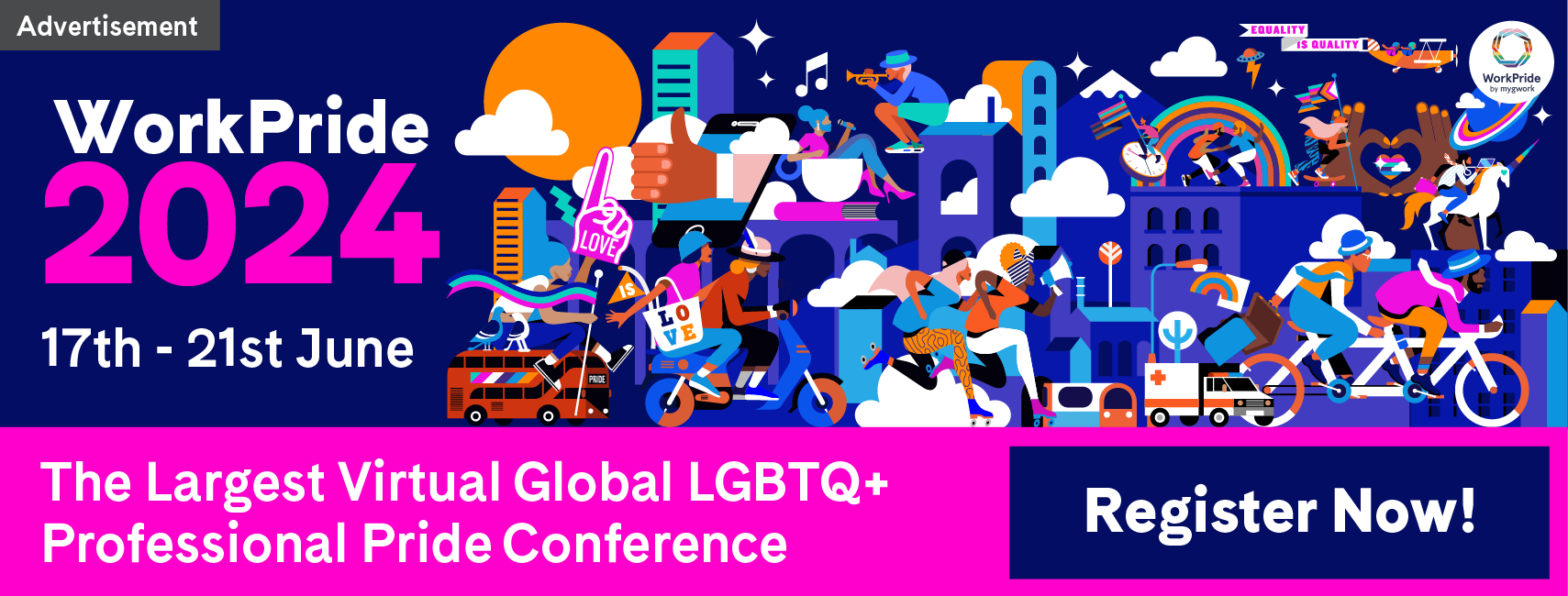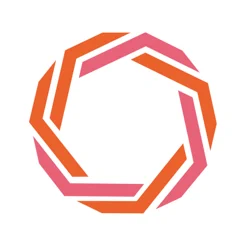
How Allies Can Show Support During LGBTQ+ History Month
Interviews
Richard Chapman-Harris discusses the importance of commemorating LGBTQ+ History Month, providing advice for how the community can learn from history, and useful structures informing allies how they can show their support.

Celebrating LGBTQHM often involves looking back; remembering people and events which have shaped our current reality. It can also be a time to reflect on where we are now on our journey towards equity, and even a month to imagine what might be coming next. When thinking about this LGBTQHM, it’s important to recognise that our history is happening now. It is very live and very real.
With that in mind, what can we do now, each day, to move us forward on inclusion? I’d like us to wonder how our everyday actions, how each moment, could help shape a more LGBTQ+ inclusive future. One structured way of doing this is by leveraging our ALLY Continuum technique which applies to everyone as we can all be members of a community and an ally depending on context.

This technique highlights that we should recognize and Acknowledge what is unfair, we should seek to Learn more, take actions to address the unfairness or ‘Level up.’ Then it is important to reflect whY we took that action and explore if our allyship has worked or if we need to revisit our approach and begin the ‘continuum’ again.
This LGBTQHM, acknowledge that inequity and indeed discrimination is experienced by many in our local and global LGBTQ+ communities. This bias can impact organizational processes, affect team dynamics, and even unfairly influence our everyday interactions with each other. Even if this can be an uncomfortable truth, it is important to recognise these inequalities and acknowledge that the experiences of other people may differ from our own even if we have not experienced bias and discrimination ourselves. A key example I’d like to share is on how much has been achieved in many countries, notably marriage equality and workplace protections but also remind us of the widening gap between the experiences of LGBTQ+ globally. There are seventy three countries where being gay is criminalised, and indeed where some members of the LGBTQ+ community are not even considered enough to be legislated against.

There is always more to learn, and we need to be proactive in keeping ourselves up to date and informed. Members of the LGBTQ+ community and allies all have an opportunity to educate ourselves and ensure we are not blinkered by our own experiences or limiting ourselves to biased representations – or underrepresentations – of one demographic in our LGBTQ+ community. Speaking as a Cis, White Gay man, I’m mindful of sexism and racism and how this can permeate narratives within the LGBTQ+ community - and in the media – and how we must take positive actions to a tackle this and ensure fair representations, voices and visibility. Make time each week or month to access resources to better educate yourself. Learn from materials which identify specific opportunities for allyship as one size doesn’t fit all groups or situations.
A key stage in the ALLY continuum is taking action. Build on the learning and address unfairness or inequity in a way that is safe and informed. By ‘levelling up’ or ‘evening out’ any imbalances, an ally can help support fairer and more equal opportunities which are more sustainable in the longer term. Being proactive in challenging microagressions as an ally can make all the difference. Some specifics from my own experiences and the insights I hear through my role:
- Challenge bias, even if these are intended as ‘jokes’ or ‘banter.’ These subtle words, phrases or attitudes inadvertently police the boundaries of sex and gender ‘norms’ and serve to exclude people who don’t fit those confines which can include most of us, not just members of the LGBTQ+ community.
- Use gender neutral pronouns for people you don’t know. ‘We’re hiring a new manager… they’ll really help the team.’ Or ‘What does your partner do? When did you meet them?’ This can help tackle gender bias mindsets (like thinking a manager will be a ‘he/him’) and mitigates against assuming someone’s partner’s gender (who also may not identify with the binary of male and female only).
- Include your pronouns in email signature and in introductions when meeting new people. This can support someone who wants to share their pronouns and identify but who may be unsure in the space.
Be sure to also ask yourself why are you an ally? Why are you keen to be a better member of society – at home, at work and at play? Is it to tackle unfairness and inequality? If so, are the actions you’re taking the right ones? Review the results of your efforts and seek feedback from others – a simple ‘what can I do to help?’ can be enlightening.
Connect with Richard Chapman-Harris via his myGwork profile here.
Keep up to date with the latest myGnews

